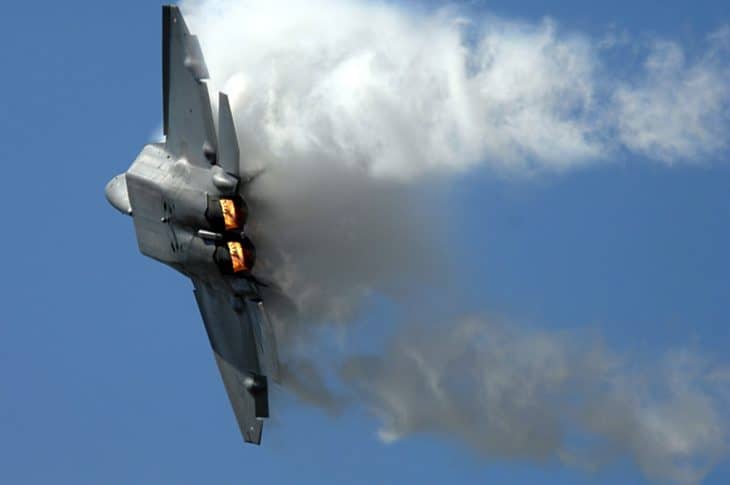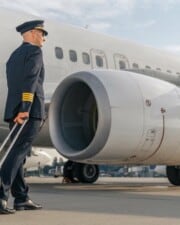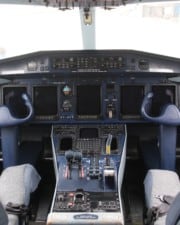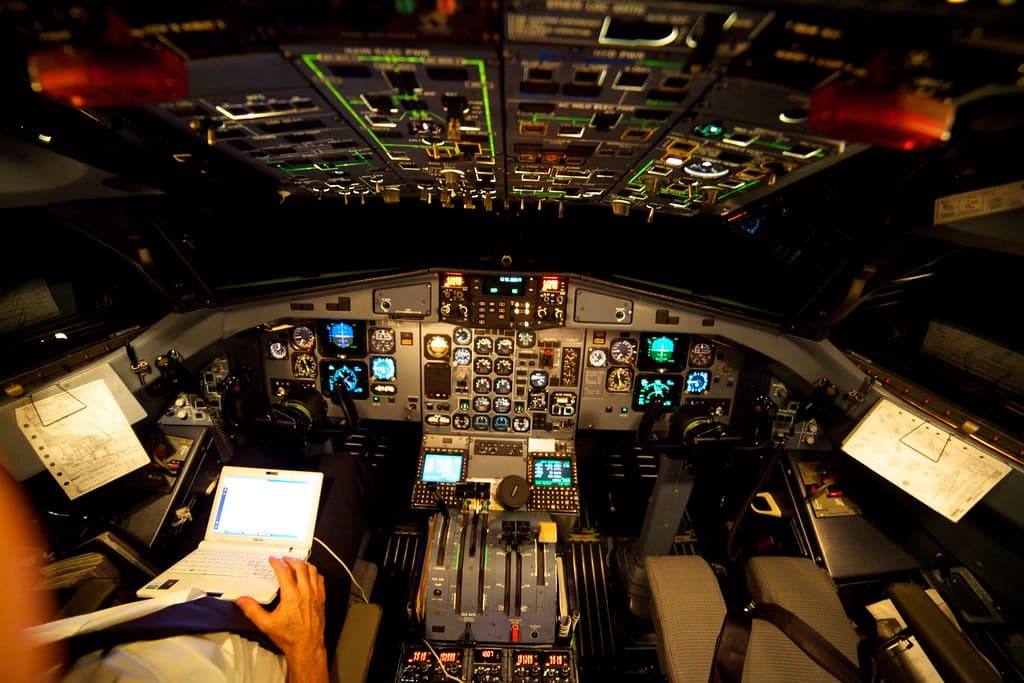Most of a student pilot’s time in ground school is spent learning how airplanes fly. Just mastering the basics of straight-and-level, unaccelerated flight is plenty confusing. But comprehending the nuances of the forces of flight requires understanding that the critical stuff happens when things change. Today, let’s take a look at load factor.
Table of Contents
When an aircraft enters a turn, the aerodynamic forces on the aircraft change in ways that every pilot must understand. Load factor is one of the most relevant results–the idea that as the bank angle increases, so too does the load imposed on the aircraft.

What is Load Factor?
Load factor can be thought of as how much the aircraft’s weight increases. No, it’s not possible to gain weight in mid-air. But forces other than just gravity are acting on an aircraft in flight, and those forces increase sometimes. When this happens, the result is a load put on the aircraft that is greater than just the weight of the plane and its contents.
Since it is expressed as a “factor,” load is shown as a ratio of the amount of lift generated over the apparent weight. It is directly related to the amount of lift that the wings need to produce. A plane that is pulling 2 Gs will need to make twice as much lift as an airplane that is only pulling 1 G. If the load factor is 1 G, then no extra load is being imposed, and the amount of lift equals the calculated weight of the aircraft.
The most common way to increase the load factor on a plane is to put it into a bank. But that’s not the only way. Sudden maneuvers also increase or even decrease load factor. Image flying along, and the pilot jerks the controls back suddenly. Everyone feels pressed down in their seats as the load factor increases. Similarly, if you suddenly push the stick forward, the load is suddenly and dramatically reduced. When load factor drops below 1 G, things feel weightless, if only temporarily.
Realize too that these sensations are being felt by everything in the aircraft, and even by the aircraft itself. And if too much force is applied, things can break.
Understanding what can cause load factor to change is vitally important for a few reasons. For one, a pilot must know that as the load factor increases, the plane must make more lift to remain aloft. Therefore, that pilot needs to act correctly to ensure the desired flight path. This means they need to fly faster or increase the angle of attack.
Also, pilots must understand that the engineers who designed the plane only expected it to have specific, predictable amounts of load applied. Aircraft can’t be made infinitely strong since extra strength will create excess weight in the airframe and less payload that the plane can carry. Designers and engineers must make concessions in their design. So they design each plane to be able to withstand a limited amount of load factor.
The FAA certifies aircraft just like they certify airmen. The categories for aircraft include normal, utility, acrobatic, transport, among other types of planes. As you would expect, to get a design certified, it must meet minimum limit load factor requirements.
The Aerodynamics of a Turn
To understand why load factor increases in a turn, some foundational aerodynamic principles need to be covered first.

Once the airplane is established in a bank, the wings no longer produce only vertical lift. Lift become divided among vertical lift that keeps the aircraft aloft and horizontal lift that pulls the plane into a turn. The total lift remains perpendicular to the wingspan.
According to Newton’s Third Law of Motion, for every action there is an equal and opposite reaction. So there must be an equal and opposite force to the horizontal lift that the wings create. This force is centrifugal force, an effect that pulls the aircraft out and away from the turn.
Assuming that the aircraft is in a level turn and not climbing or descending, the forces opposite lift will be equal and opposite. Weight, or gravity, is opposite vertical lift. Centrifugal force is equal and opposite horizontal lift. When totaled together, these two forces are greater than weight alone. The total sum of these loads is equal and opposite the total lift.
The amount of that increase is the load factor. It is expressed as a factor above the normal weight of 1 G. A 2,400-pound plane that is in a 60-degree banked turn experiences 2 Gs. Therefore, it has a total load of 4,800 pounds.

Changes in Stall Speed
Since the wings must support a higher weight, they must do that one of two ways. Either they must move through the air faster, or they must increase their angle of attack. For this exercise, we’ll assume that airspeed remains constant. With this in mind, an aircraft flying at 90 knots will need a greater angle of attack in a 60-degree banked turn than one that is flying straight and level.
A stall occurs when the wing exceeds the critical angle of attack. Therefore, the airplane in a turn is much closer to the critical angle of attack than the airplane in straight and level flight.
This demonstrates two important things. Firstly, it shows that an aircraft can stall at a much higher airspeed than those indicated on the airspeed indicator. This drives home the point that an airplane does not stall at a specific airspeed, but rather at a specific angle of attack.
Secondly, it demonstrates that the stall speed will always increase in a turn. The steeper the bank angle, the more the stall speed increases.
Limit Load Factors in Design
While designers can build an aircraft anyway they want, the FAA sets minimum standards in the United States. If an aircraft holds an FAA airworthiness certificate, the pilot can know that the design of aircraft meets the minimum standards listed for the type of certificate.
- Normal Category -1.52 to +3.8Gs
- Utility Category -1.76 to +4.4 Gs
- Acrobatic Category -3.0 to +6.0 Gs
- Transport Category -1.0 to +2.5 Gs
These are the minimums laid out by the FAA for aircraft designers. Some planes, especially aerobatic planes, can tolerate much higher G-forces. For the exact specifications of a specific aircraft, refer to the Aircraft Flight Manual (AFM) or Pilot’s Operating Handbook (POH).
Keeping the Plane Safe
Another critical and closely-related concept is maneuvering speed or Va. Maneuvering speed takes the rather abstract idea of designed limit load factors and makes them applicable in an airplane cockpit.
In practice, the calculated Va for a flight can be thought of as the safety speed. Below that speed, the aircraft will stall before any force could break it. That is to say, when a dangerous amount of load is added to the weight of the aircraft, then the wings will be unable to make that amount of lift and will stall.
While stalls aren’t generally considered good things, in this instance, the stall relieves the load from the airframe. In effect, by stalling the aircraft saves itself from any damage. In contrast, if the plane was flying fast enough that it could continue the flight and accept an imposed load greater than the designed limit load factor, some form of damage will result.
Damage from over-stressing the airframe could range from something that is not noticed during the flight to a catastrophic in-flight failure of the airframe surface. Unfortunately, metal fatigues in ways that are difficult to detect. The crystalline structure of metals like aluminum makes them very strong, but once their bonds are broken, they are far more likely to fail in the future.
Stresses that occur to airframes as the result of exceeding the limit load factor may weaken the metal and cause a catastrophic failure at some other time in the future, unpredictably.
Maneuvering speed is a vital aircraft V-speed to know, yet it isn’t shown on the airspeed indicator’s markings. Why not? As demonstrated above, the stalling speed for an aircraft is going to change as it banks into a turn. Since the airplane will stall at a higher airspeed, Va will change.

Another factor that makes Va change is the weight of the aircraft. As weight increases, Va increases because it will cause the wing to reach the critical angle of attack sooner.
Load factor is covered in depth in the FAA’s Pilot’s Handbook of Aeronautical Knowledge, Chapter 5.
Related Posts











